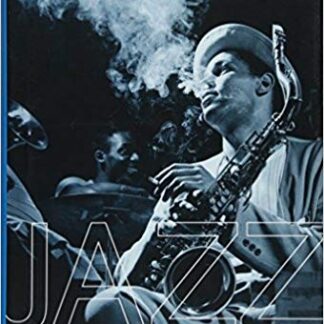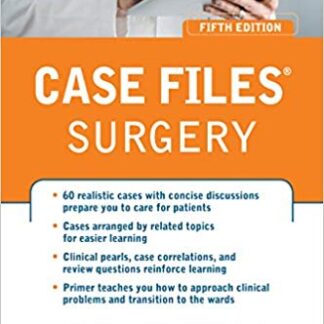Description
A Creative Approach to Music Fundamentals 11th Edition by William Duckworth, ISBN-13: 978-0840029980
[PDF eBook eTextbook] – Available Instantly
- Publisher: Cengage Learning; 11th edition (January 25, 2012)
- Language: English
- 384 pages
- ISBN-10: 0840029985
- ISBN-13: 978-0840029980
Internationally renowned composer William Duckworth explores the fundamentals of music in this creative, reader-friendly text that takes differing student abilities into consideration.
A CREATIVE APPROACH TO MUSIC FUNDAMENTALS, Eleventh Edition, covers music fundamentals in 15 concise chapters and 11 enrichment appendices. Duckworth focuses on developing student skills by offering written and aural exercises, not only helping them to learn the basics, but also giving them the opportunity to apply their knowledge in realistic music situations. A CREATIVE APPROACH TO MUSIC FUNDAMENTALS offers clear and comprehensive coverage of all major topics for a music fundamentals course. The Music in Action boxes present opportunities for students to create music while learning the fundamentals of rhythm, melody, scales, intervals, and triads..
Table of Contents:
Brief Contents
Contents
Preface
Introduction
Introduction
Looking at Music
The Characteristics of Musical Sound
The Elements of Music
How to Practice
Ch 1: The Basics of Music
Introduction
Rhythm
Pulse
Meter
Measures
Note Values
Rests
Pitch
Clefs
The Great Staff
A Final Note
Practice
Ch 2: The Keyboard
Introduction
The White Keys
The Black Keys
Musical Distances
Accidentals
A Final Note
Practice
Focus on Skills 1: The Basics
Ch 3: Rhythm I: Simple Meter
Introduction
Dotted Notes
Time Signatures
Simple Meter
A Counting Method for Simple Meters
Conducting Simple Meters
Beams in Simple Meter
Tempo
A Final Note
Practice
Ch 4: Rhythm II: Compound Meter
Introduction
Compound Meter
A Counting Method for Compound Meters
Beams in Compound Meter
Conducting Compound Meters
Ties
Repeat Signs
Triplets and Duplets
A Counting Method for Triplets and Duplets
A Final Note
Practice
Focus on Skills 2: Rhythm
Ch 5: Pitch
Introduction
Enharmonic Pitches
Ledger Lines
The Octave Sign
Octave Identification
Dynamics
How to Read a Musical Map
A Final Note
Practice
Focus on Skills 3: Pitch
Ch 6: Major Scales
Introduction
Scales as Interval Patterns
Elements of the Major Scale
Naming Scale Degrees
Ear Training
A Final Note
Practice
Ch 7: Major Key Signatures
Introduction
The Key Signature
The Circle of Fifths: Major Keys
A Final Note
Practice
Focus on Skills 4: Scales 1
Ch 8: Intervals
Introduction
Interval Identification
Perfect Intervals
Major and Minor Intervals
Compound Intervals
Harmonic Inversion of Intervals
A Final Note
Practice
Focus on Skills 5: Intervals
Ch 9: Minor Key Signatures
Introduction
Related Keys
Minor Key Signatures
Parallel Keys
The Circle of Fifths: Minor Keys
A Final Note
Practice
Ch 10: Minor Scales
Introduction
Natural Minor Scale
Harmonic Minor Scale
Melodic Minor Scale
Minor Scales in Actual Music
How to Sing Minor Scales
A Final Note
Practice
Ch 11: Pentatonic and Blues Scales
Introduction
The Pentatonic Scale
The Blues Scale
A Final Note
Practice
Focus on Skills 6: Scales 2
Ch 12: Triads
Introduction
Basic Structure of Triads
Major and Minor Triads
Close and Open Positions
Augmented and Diminished Triads
Triads and Scales
Inversions of Triads
Labeling Inversions
A Final Note
Practice
Ch 13: Triads in a Musical Context
Introduction
Three Ways to Label Triads
Seventh Chords
Recognizing Triads in Actual Music
A Final Note
Practice
Ch 14: Chord Progressions
Introduction
The Dominant/Tonic Relationship
Cadences
Simple Chord Progressions
A Final Note
Practice
Focus on Skills 7: Triads and Progressions
Ch 15: Writing a Song
Introduction
Primary and Secondary Chords
Harmonizing a Melody
Tips for Harmonizing
Musical Form
A Final Note
Practice
Appendix A: Graded Rhythms for Counting and Performing
Simple Meters
Compound Meters
Less-Familiar Meters (Simple and Compound)
Appendix B: Graded World Rhythms in Two and Three Parts
Two-Part Rhythms
Three-Part Rhythms
Appendix C: Syllables for Sight Singing Scales and Modes
Appendix D: Graded Melodies for Sight Singing and Playing
Major Keys
Minor Keys
Appendix E: Chromatic Scale and Major Scale Fingerings for Keyboard Instruments
Chromatic Scale
Major Scales
Appendix F: The C Clef
Appendix G: Other Scales and Modes
Modes
Transposing the Modes
The Whole-Tone Scale
The Octatonic Scale
Appendix H: Transposing the Modes
Appendix I: A Brief Introduction to Timbre
Appendix J: A Brief Discussion of Acoustics
Frequency
Amplitude
Duration
Timbre
Appendix K: Basic Guitar Chords
Major Keys
Minor Keys
Glossary
Subject Index
Index to Musical Examples
An internationally known composer, acclaimed teacher of American music, and the founder of Postminimalism, William Duckworth has written more than 200 works, including the well-known Time Curve Preludes for piano. In addition to numerous teaching awards, Rolling Stone magazine called his teaching “hip, bright and innovative.” Duckworth has been honored by the American Music Society as one of Six Master Teachers in America. Additionally, Cathedral, co-created with Nora Farrell and online since 1997, is one of the first interactive works of music and art on the Web. Duckworth’s honors include the 2001 ASCAP-Deems Taylor Internet Award, the 2002 Award in Music from the Foundation for Contemporary Arts, and a 2007 Senior Fulbright Specialist Award that assigned him to the Queensland Conservatorium Research Centre in Brisbane, Australia, and resulted in iOrpheus, Duckworth and Farrell’s 2-year unfolding of video podcasts, stage performances, and a public opera in the streets and promenades of Brisbane’s South Bank Parklands.
What makes us different?
• Instant Download
• Always Competitive Pricing
• 100% Privacy
• FREE Sample Available
• 24-7 LIVE Customer Support







